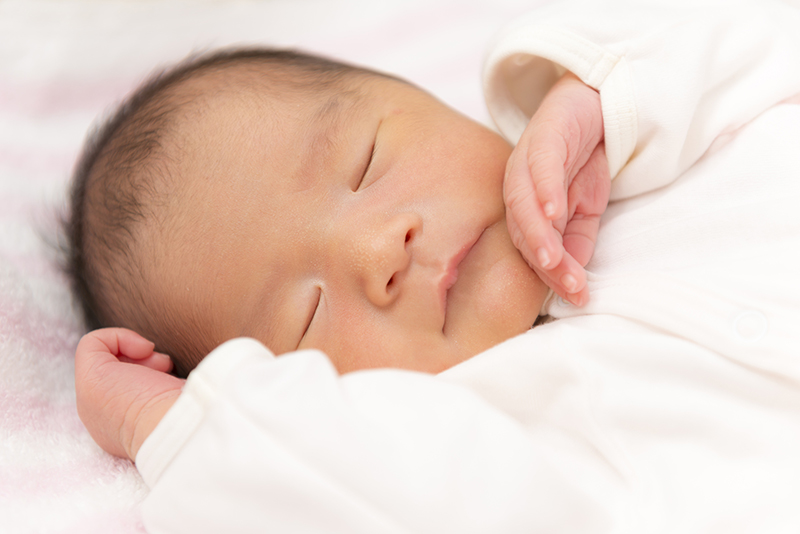Families For Life | Safe Sleeping: 11 Tips-Newborn

It’s natural to find yourself checking your sleeping newborn to make sure everything is OK. You can also take simple and effective safe sleeping steps to minimise the risk of sudden unexpected death in infancy (SUDI) including sudden infant death syndrome (SIDS) and fatal sleeping accidents.
SUDI including SIDS and fatal sleeping accidents: risk factors
When a baby dies unexpectedly and for no obvious reason, it’s often described as sudden unexpected death in infancy (SUDI). SUDI is a broad term that includes SIDS and fatal sleeping accidents.
Safe sleeping steps to reduce the risk of SUDI
1. Put babies to sleep on their backs
This is the safest position for healthy babies. Babies are more likely to die of SUDI including SIDS and fatal sleeping accidents if they sleep on their sides or tummies.
Once your baby can roll over (at around 4-6 months), keep putting him to sleep on his back, but let him find his own sleeping position.
2. Make sure babies’ heads or faces can’t get covered while they’re sleeping
Put your baby low down in the cot, so her feet are near the bottom end. Tuck in the bed sheets securely so they can’t cover your baby’s head. You could use a safe infant sleeping bag instead of blankets. Sleeping bags with a fitted neck and armholes and no hood are the safest.
3. Avoid smoking
There’s strong evidence that exposure to second-hand smoke harms babies, and that smoking during pregnancy and after birth increases the risk of SUDI including SIDS and fatal sleeping accidents. The link between SUDI and smoking is strong even when parents smoke away from their babies.
If you want to quit smoking and you’re finding it hard, call Quitline on 1800 438 2000 or visit IQuit. You could also speak to your General Practitioner (GP) or a paediatrician.
4. Use a cot that meets current Singapore's safety standards
Only well-maintained cots built to strict safety standards are good enough for your baby. Cots that meet the standard will have a clear label – EN716, ASTM 1169 and ISO 7175. If you’re given a cot or buy a second-hand one, check that it meets current standards here: https://www.consumerproductsafety.gov.sg/consumers/product-safety-tips/children-product/
Cots that don’t meet the standards have many risks, including lead paint, gaps that a young child can get caught in, and sides that are too low and that your child could climb over.
5. Share a room
Have your baby in a cot in your room for the first 6-12 months.
6. Breastfeed your baby if you can
Breastfeeding reduces by more than half the risk of SUDI including SIDS and fatal sleeping accidents. And regardless of whether your baby is breastfed or bottle-fed, it’s still very important to follow safe sleeping practices.
7. Avoid cot bumpers, soft toys, pillows and quilts
Babies have been suffocated by rolling into or being covered by these soft objects. It’s safest to keep them out of your baby’s cot.
8. Use a firm and well-fitting mattress
Make sure there are no gaps between the mattress and the edge of the cot, where a baby’s head could get jammed. Don’t use padding or underlays like rubber. If you’re using a portable cot, use only the firm, thin, well-fitting mattress that comes with it. Don’t add a second mattress.
9. Avoid baby sleeping on couches or makeshift bedding
Sleeping on a couch, with or without someone else, is very dangerous for babies. Also take care with makeshift bedding. Some situations where your baby might be in danger include getting wedged between a mattress and a wall, getting stuck between pillows or cushions, or slipping down until his head is covered by blankets.
10. Dress your baby in clothing that’s warm, but not hot
Overheating is a risk factor for SUDI including SIDS and fatal sleeping accidents. Ask yourself what you would wear to bed and use that as a guide. Keep your baby’s head uncovered indoors – this allows your baby to cool and not overheat. Don’t worry if your baby’s hands and feet feel cool – that’s normal.
11. Make sure your baby’s carers know how to protect against SUDI
It’s best not to assume that other people know about safe sleeping practices, even professional child carers. Have a look at the planned sleeping arrangements, and make sure yourself that your baby will be positioned safely for sleep. For example, it isn’t recommended to leave a baby sleeping in a pram unsupervised.
Flat spots on baby’s head
When babies are young, their heads are still very soft. Sleeping on their backs can sometimes make the backs of their skulls a little bit flat over time. This is called positional plagiocephaly. It normally gets better without any medical help by the time babies are 12 months old.
If it’s worrying you, you can gently alternate the tilt of your baby’s head each time you put her into bed to sleep. But always put your baby on her back to sleep. Then keep her off the back of her head as much as possible when awake. Tummy time can help you do this.
© raisingchildren.net.au, translated and adapted with permission
Explore more